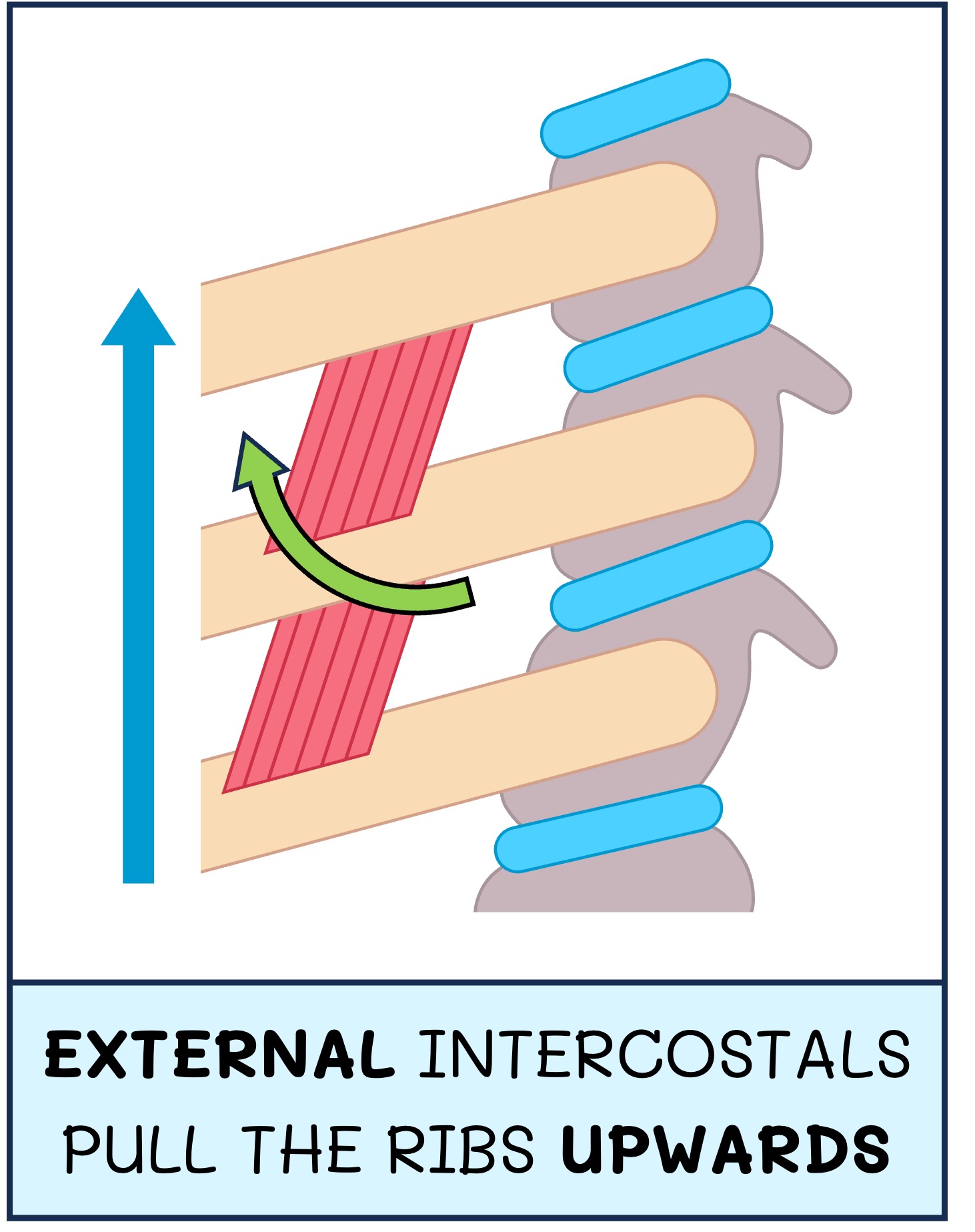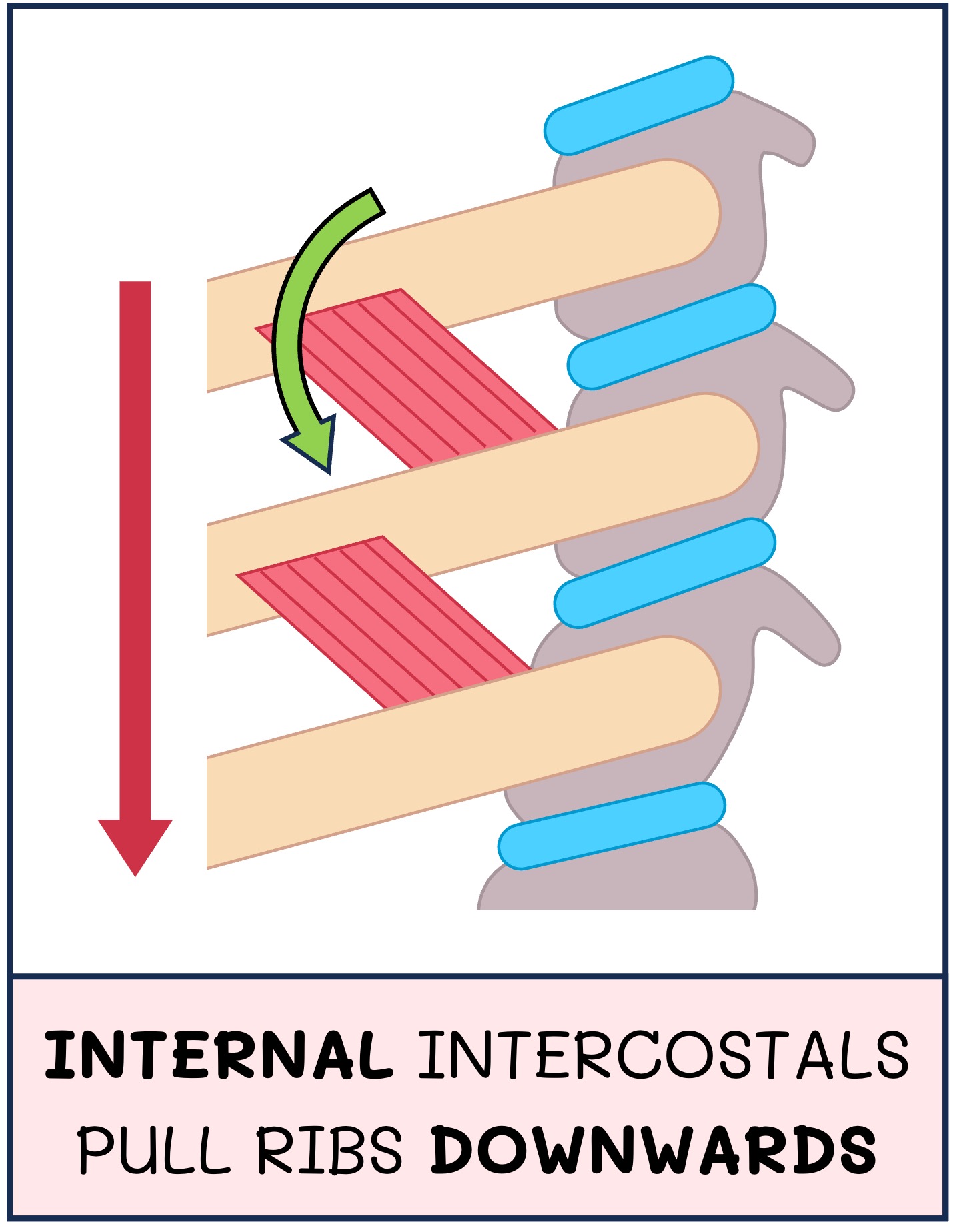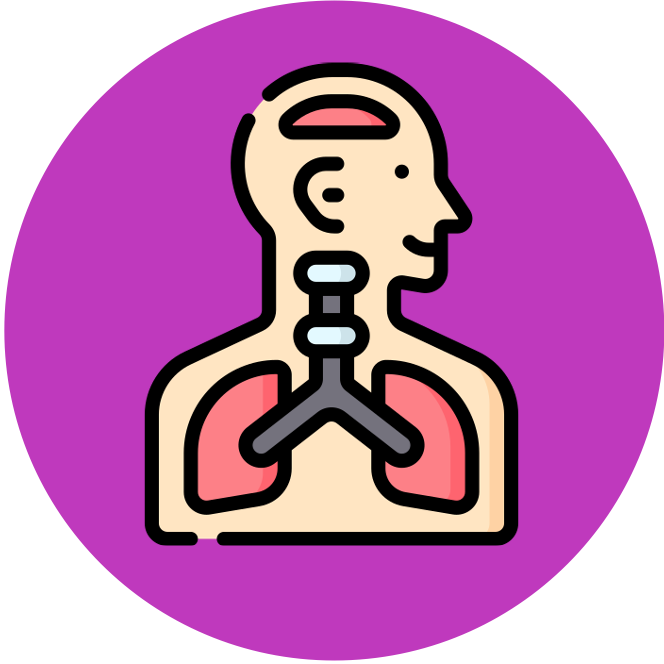

Muscles
Muscles connect to bones (via tendons) and contract to provide the force required to produce movement
-
The muscle connects a static bone (point of origin) to a moving bone (point of insertion)
Muscles only do work when they contract – they cannot supply the energy to lengthen themselves (i.e. they cannot push)
-
Consequently, skeletal muscles exist in antagonistic pairs (when one contracts, the other relaxes) to enable opposing movements
Intercostal Muscles
An example of an antagonistic muscle pair are the intercostal muscles which connect to the ribs and facilitate breathing
-
External intercostal muscles attach to the outside of the ribs and contract to pull the ribs upwards and outwards (inhalation)
-
Internal intercostal muscles attach to the inside of the ribs and contract to pull the ribs downwards and inwards (exhalation)
The different orientations of the muscle fibres in the internal and external fibres of the intercostal muscles mean that they move the ribcage in opposite directions
-
The upper rib acts as the static bone for the external intercostal muscles, so the lower ribs are pulled up upon contraction
-
The lower ribs act as the static bone for the internal intercostal muscles, so the upper ribs are pulled down upon contraction
When one of the muscles contracts, it stretches its antagonistic partner, which causes potential energy to be stored in the muscle protein titin
-
The potential energy in titin is converted into kinetic energy that returns the muscle fibre to its relaxed state
Intercostal Muscles

Inhalation





